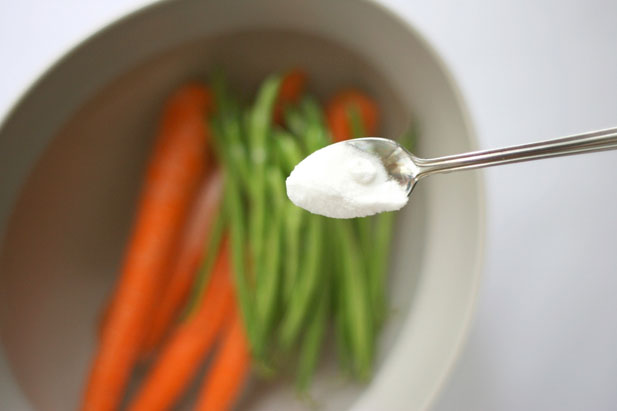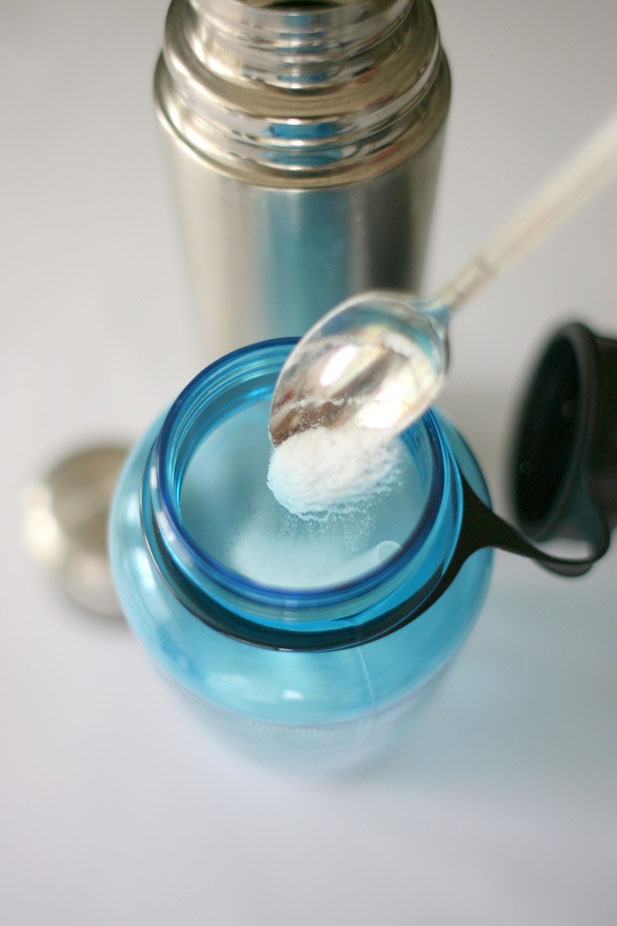Kitchen tips and tricks: the magic of baking soda
 The power of this miracle powder lies in its ability to regulate pH. When baking soda comes into contact with either acidic or alkaline substances, its natural reaction is to neutralise the pH as well as prevent any further change in this pH balance (buffering).
The power of this miracle powder lies in its ability to regulate pH. When baking soda comes into contact with either acidic or alkaline substances, its natural reaction is to neutralise the pH as well as prevent any further change in this pH balance (buffering).
In addition to this neutralising and buffering super power, it’s an excellent leavening agent and this is where its claim to fame lies. Baking soda releases carbon dioxide when exposed to high temperatures or acidic ingredients such as cream of tartar, lemon juice, yoghurt, buttermilk, cocoa or vinegar. This release of CO2 causes an expansion in the batter of baked goods, leading to the characteristic texture of foods such as cakes, breads and pancakes. Impressive stuff but wait, there’s more – here’s how to put this magic ingredient to good use in your home.
1. Keep cut flowers fresh for longer
Add a teaspoon of baking soda to a vase of water to extend the lifespan of fresh flowers. The baking soda also prevents the water from developing an odour.
 2. Make your pots and pans sparkle
2. Make your pots and pans sparkle
It can be a challenge to restore pots and pans to their original brilliance but baking soda makes this a little bit easier. You can achieve this in one of three ways: add about 2 tablespoons of baking soda to a basin of hot water along with your regular dishwashing liquid and let the pots or pans soak for a few minutes before washing as usual; add 2 tablespoons to the pot or pan with some water and simmer for 15 minutes to lift stubborn, burnt-on food and stains; or make a paste by combining 3 parts baking soda with 1 part water and scrub the pan with a scourer before washing as usual.
 3. Baking soda can also add a magic touch to everyday cooking
3. Baking soda can also add a magic touch to everyday cooking
Add ½ teaspoon of baking soda for every 3 eggs used to make fluffier omelettes or scrambled eggs; put a pinch of baking soda in your tomato-based dishes to reduce acidity; or take a tip from Chinese cuisine and sprinkle a little bit of baking soda on small pieces of meat (such as beef or pork) to tenderise – leave the meat in the fridge for an hour or two before rinsing the baking soda off and cooking as usual.
4. Freshen hands, chopping boards and cooking utensils
Remove strong odours after working with ingredients such as garlic or onions by simply scrubbing with a little bit of baking soda, rinse and dry. This also helps in removing stains from chopping boards.
5. Clean the fridge and keep it odour-free
Make a paste of baking soda and water (3 parts baking soda to 1 part water) and clean the inside of your fridge with it to remove stains and bad smells. To keep it odour-free, place a small container of baking soda inside the fridge to absorb any lingering strong smells. This also works well for the freezer, grocery cupboard or cupboards prone to moisture (such as below the kitchen sink).
6. Refresh dishcloths and sponges
Dissolve about 4 tablespoons of baking soda in 1 liter of warm water and soak your dishcloths or sponges overnight to remove strong smells.
7. Wash fruit and vegetables
This is a very effective yet safe way of ensuring that all dirt and residue is washed off fresh fruit and vegetables. Simply add 3 or 4 tablespoons of baking soda to a large bowl or basin of water and wash your fruit and veg in it.
 8. Clean your oven
8. Clean your oven
Mix 4 tablespoons of baking soda with 1 liter of warm water and wash the inside of your oven with the solution. For more stubborn spots, apply a paste (3 parts baking soda, 1 part water) and allow to stand for 10 minutes before wiping away.
9. Deodorise and clean the microwave
Add 2 tablespoons of baking soda to a small microwave-safe bowl of water and microwave for a couple of minutes. Wipe the inside of the microwave to remove any stains or food residue.
10. Polish silver or stainless steel cutlery and serving utensils
Make a paste of 3 parts baking soda and 1 part water, rub it onto the silver or stainless steel utensil using a soft cloth or sponge, rinse and dry.
11. Remove coffee, tea or rust stains
We’ve all had mugs, cups or baking tins with stubborn stains that seem impossible to get rid of without resorting to harsh chemicals. Simply add 4 tablespoons of baking soda to a liter of warm water and pour this solution into the mugs, cups or baking pan. Allow it to soak for a couple of hours (or overnight) before washing as usual. If some stains still stick around, try scrubbing them with a paste (3 parts baking soda, 1 part water) until the stains are a thing of the past.
12. Keep lunch containers, cold drink bottles, thermos flasks and jars as good as new
Add a tablespoon of baking soda with warm water to the container, bottle, flask or jar and soak overnight to remove any persistent smells or stains.
 13. Make sure the kitchen bin remains odour-free
13. Make sure the kitchen bin remains odour-free
Sprinkle a generous amount of baking soda into a fresh bin bag to absorb any unpleasant odours. Keep the bin itself in tiptop condition by washing it with a mixture of baking soda and water once a week. This is a nifty trick for recycling fans.
14. Clean stove and counter tops
Sprinkle baking soda directly onto stove or counter tops, wipe with a cloth soaked in warm water and see stubborn stains disappear. The baking soda also eliminates any odours, leaving the kitchen smelling fresh.
15. Extinguish small fires
Yes, really. Baking soda is a good thing to keep in the vicinity of the stove because you can put out small fires by simply sprinkling it straight onto flames. Carbon dioxide is released when the baking soda comes into contact with heat, which smothers the flames.
 Baking soda offers the whole package. It’s a multitasker extraordinaire, inexpensive and friendly to the environment. Are there any other miracle kitchen ingredients out there that can match its might?
Baking soda offers the whole package. It’s a multitasker extraordinaire, inexpensive and friendly to the environment. Are there any other miracle kitchen ingredients out there that can match its might?
